Last summer, I visited Mammoth Cave in Kentucky with Fred, my husband. It was our first experience of hiking in a cave. My previous spelunking was inside a vertical cave in Indonesia. It was no hiking, but rappelling or descending deep underground. Fred has never been into a cave before. Both of us did not know what to expect, but we were excited to experience our new adventure.
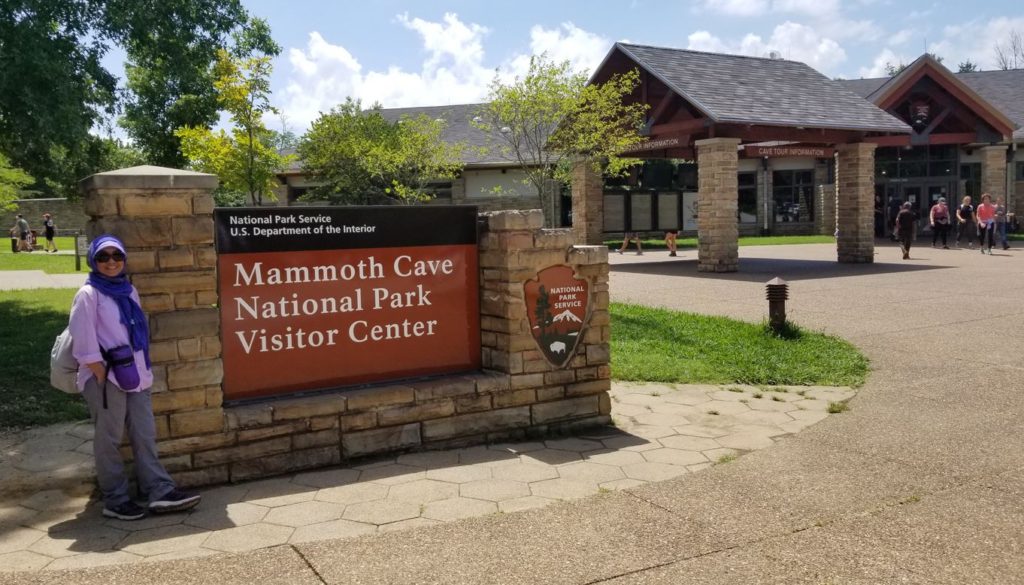
The Size
Mammoth Cave was named for its “mammoth” or immense size of the cave’s chambers and avenues. Part of the cave, called Mammoth Dome is 192 feet high and the other one called Bottomless Pit is 105 feet deep.

One of the chambers called Rotunda is about a quarter acre in size where two Great War Monuments are located. During the War of 1812, the cave was being mined on an industrial scale for potassium nitrate (saltpeter) for use in gunpowder.
The cave is also known as the world’s longest cave. In September 2021, the cave set a new record of its length to a whopping 420 miles (676 km), according to the National Park Service.
The History
Mammoth Cave was established as a national park on July 1, 1941, but public tours began some 200 years ago. Inside the cave, we can see graffiti written by visitors from the year of 1883.
One of the first explorer of the cave was an enslaved African Americans, Stephen Bishop who worked from 1838 to 1856. He was also known as a self-taught geologist who had a prodigious memory. Bishop was capable to drew a map from memory of the cave’s explored passageways.

The Tours
The Park offers many interesting tours guided by passionate, knowledgeable, and sometimes funny rangers who love to share jokes related to the cave.
My husband and I took five of ten tours they offered. The length of the tours varies from two to four hours. My favorite tours are the Violet City Lantern and Star Chamber tours. Both tours need lanterns as the only source of light inside the cave.
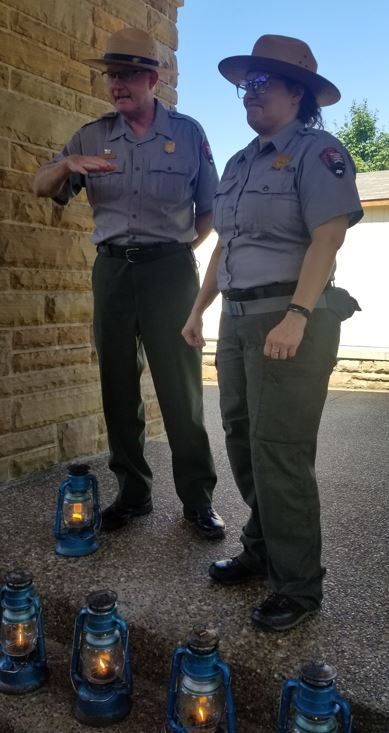
During the tours, we can see many amazing rock and geology formations. We can also see artifacts and other signs left by Native Americans who first discovered the entrances to the cave. Another interesting thing to see is the old tuberculosis huts built in 1842-43 deep inside the cave to accommodate patients with tuberculosis.
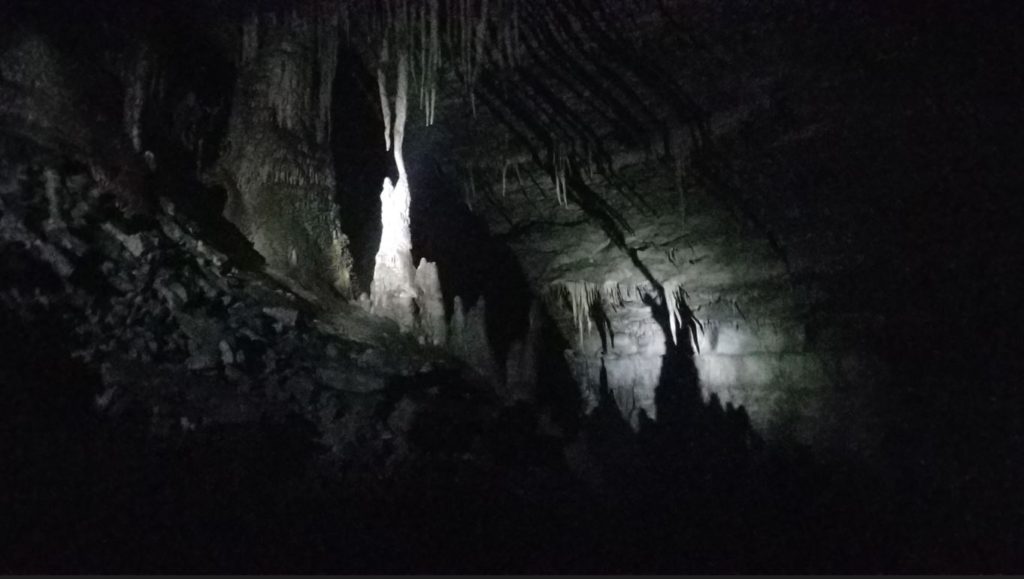
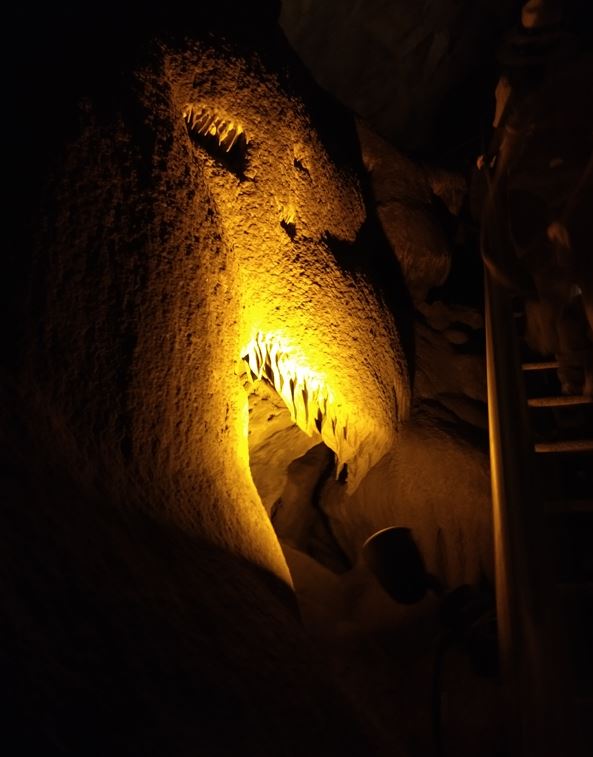
The difficulty levels of the tours are varies. Some tours are sightseeing tours. Other ones require hiking, climbing, and descending very steep hills. There are also fun sections called Fat Man’s Misery followed by Tall Man’s Agony. The first one is a very narrow passageway that takes about 15 minutes to pass through. The last one requires tall people to bend constantly to navigate the passageway.
One Frequently Asked Question from visitors is about bats. We saw only one bat during our five tours. Turns out, there is a disease called White-Nose Syndrome which has killed millions of bats since its discovery in New York in 2006. To prevent spreading the disease, visitors are required to walk across a decontamination mat to clean our shoes when exiting the cave.
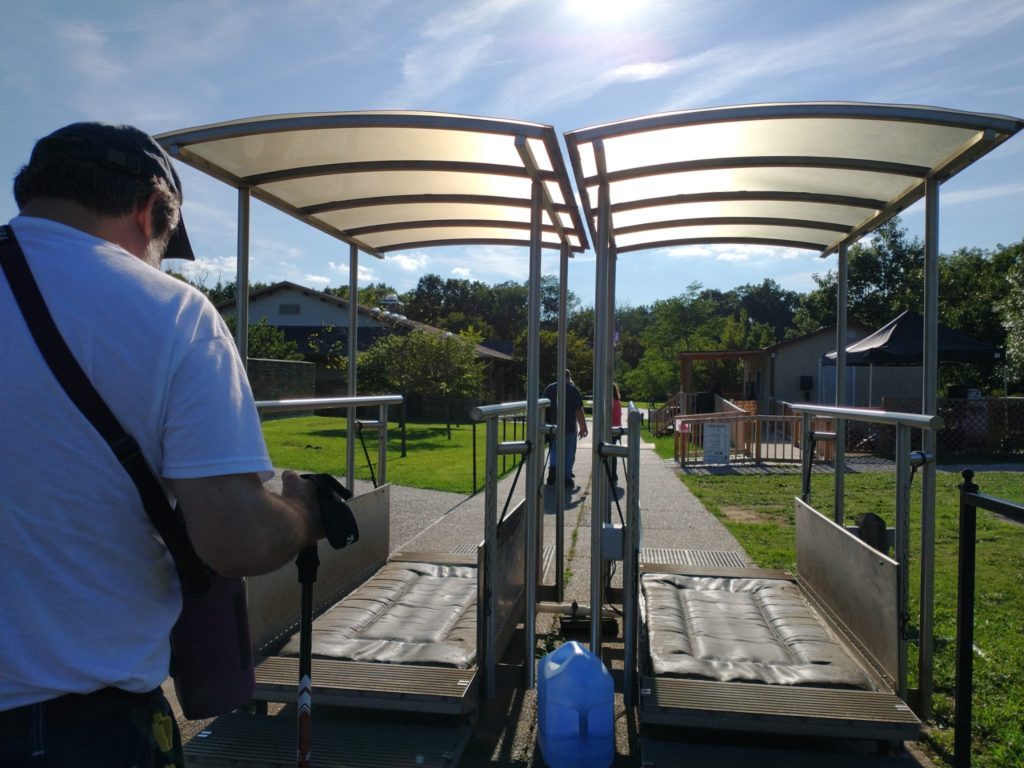
Hiking inside the Mammoth Cave turns out to be a fun-filled experience. Fred loves the the temperature inside the cave. It is around 54°F year-round. I was grateful to realize how our eyes amazingly adapt to the darkness of the cave. The only downside of it, for me personally, is how hard it is to take good pictures inside the cave. Overall, I highly recommend anyone to visit the Mammoth Cave, one of great natural wonders in the U.S.
